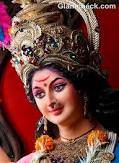
1, Mall road, Dehradun - 248001
Website: www.dehradundurgabari.org
Email Id: info@dehradundurgabari.org
President Email Id: president@dehradundurgabari.org
Vice President Email Id: vicepresident@dehradundurgabari.org
Secretary Email Id: secretary@dehradundurgabari.org
It is said that Bengalis are passionately fond of their food, language and culture. When a few of them come together, particularly if they are away from their homeland, they immediately indulge in 'adda' and start planning on some activity like organizing a cultural programme or a puja. The first choice, of course, is the greatest and the most grandiose of all pujas - Durga Puja, if fund permits. After all, Durga Puja is the ultimate rallying point for all Bengalis wherever they are. This is probably what happened with a bunch of Bengali youngsters who migrated to Dehradun to join a newly born organization half a century ago in 1956.
They formed a group called "Dehradun Sarbojanin Durga Puja Samiti" with the patronage of Shri AMN Ghosh who was at the helm of the then Oil and Gas Directorate. Over the next 50 years, the small directorate grew into the largest oil corporate of India while the zealous effort put in by the small group of enthusiastic people culminated in the golden jubilee celebration of Durga Puja festival started by them. Durga Puja, however, was already being celebrated by Bengali communities elsewhere in Dehradun before this group initiated their efforts in 1956.The Karanpur area of Dehradun, which can possibly boast of the oldest "Bangla Library" (established in 1900) in North India, had been organizing puja since 1922. So did the Raipur area.
The British administration had established the Survey of India and an ordnance factory and also brought a large number of Bengali Babus (bureaucrats) in tow to this part of the country. This resulted in a large Bengali population which, in turn, spawned a few vintage pujas in Dehradun. Eager to have an identity of their own, the young group of migrants was desperately looking for a site where they could hold the puja. They approached the Tagore family descendant Shri Prashanta Nath Tagore, the owner of "Tagore Villa" situated close to Bindal bridge - a prominent landmark of Dehradun.
And thus started the puja organized by the "Dehradun Sarbojanin Durga Puja Samiti". continued to be held there till 1972 even after the property of "Tagore Villa" changed hands. It needs to be mentioned here that even the early pujas were not confined to the Oil and Gas Directorate family members only. Persons like Shri Gaur Majumdar, Shri Banerjee, Shri Sanyal, Shri Pradyut Ganguly (popularly known as "Photo-Ganguly") and their families who were then living in Cannaught Place or nearby areas came forward and joined hands for smooth performance of the puja. All these years (1956-72), a growing need was felt by the members of the samiti to establish a site entirely their own that will give them a sense of belonging. In a meeting held in 1973 under the chairmanship of Shri A.K. Ghosh, Member of the then Oil and Natural Gas Commission, it was decided to accumulate funds to acquire a piece of land. Finally, the present site at 1, Mall Road was purchased in 1975 (from Shri Dakshini) at a cost of Rs 42000. Shri K.M. Chanda took keen interest in this affair and it is due to his great effort along with few others that it was possible to raise the required fund.The venue of the puja shifted from "Tagore Villa" to the present site since 1973, even before the land was acquired. Thus, it will be factually correct to say that Dehradun Durgabari as an establishment is 32 years old while the Durga Puja conducted by the samiti is 50 year old. The newly formed Durgabari committee appealed to all to become life members with a contribution of Rs 501 so that a permanent rostrum for puja (Durga Mandap) and a stage for holding cultural programme (Nat Mancha) could be constructed. This was indeed a great foresight on the part of our predecessors due to which we and our posterity can take pride in owning a community property where we can assemble for any religious, cultural or social occasion. Notable among the many pioneers whose indomitable spirit, enthusiasm and hard work during the period 1956 to 1973 enabled Durgabari to acquire its present status are: AMN Ghosh, A.K. Mitra, A.K. Ghosh, H.N. Majumdar, S.N. Harchaudhury, Mrityunjay Chakraborty, A. Rakshit, A.T. Bhattacharya, K.M. Chanda, A.P. Ghosh, N.C. Lahiri, M.A. Alwar, P.K. Ganguly, S.N. Sengupta, D.K. Chandra, T.Banerjee, N. Dey Biswas.
Over the years, the collection from subscription and advertisements for the puja souvenir grew from a few thousand rupees to more than six lakh at present. A certain fraction of this collection is spent towards the improvement and maintenance of Durgabari premises. Durgabari also houses a library that has a large collection of books primarily in Bengali language. So do visit Durgabari whenever you happen to visit Dehradun.
After the establishment of Durgabari, the aim of the group went beyond holding pujas and the associated cultural activities. It was realized that establishing meaningful contact with the local population was essential. People from all walks of life, transcending all linguistic and religious barriers, were already participating in the puja festivals - the idea emerged that over and above the religious and cultural activities, poor people will be extended medical and other help.
The aims and objectives may be summarized as follows
To provide a platform and venue for sociocultural activities.
To help the poorer sections of the society
To provide a platform and venue for socio-cultural activities.